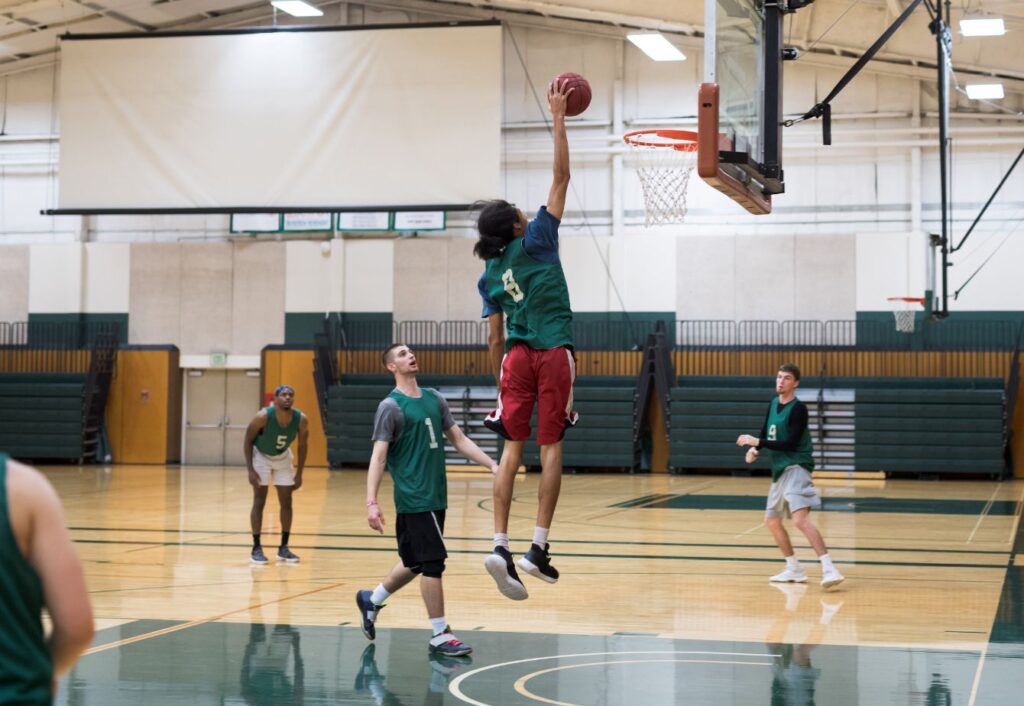How Many Conferences in College Basketball?

College basketball conferences, and groupings of teams from various universities, play a pivotal role in shaping the competitive landscape. They are determining rankings, and ultimately influencing the teams’ journey to the highly sought-after NCAA Tournament.
The central question that piques the curiosity of fans and pundits alike is, “How many conferences are there in college basketball?” To find the answer, we delve not only into the numbers but also explore the profound impact of college basketball conferences on the sport, players, fans, and the broader cultural significance they hold.
College basketball, a sport celebrated for its passion and intensity, showcases the talents of young athletes as they compete on the hardwood.

Understanding College Basketball Conferences
To comprehend the significance of college basketball conferences, it is essential to grasp their structure and purpose. Conferences, often organized by geographical proximity, bring together teams that regularly compete against each other during the season.
At the summit of the conference hierarchy, major conferences command widespread attention and dominate the national basketball scene. Powerhouses like the ACC, Big Ten, SEC, and Pac-12 boast storied histories and consistently produce formidable teams. On the other hand, mid-major conferences, though perhaps less in the national spotlight, are known for their exciting upsets and Cinderella stories during the NCAA Tournament.
Counting the Conferences
With a sport as dynamic as college basketball, conference landscapes are subject to constant change. As universities seek the right competitive fit or geographical alignment, realignments and expansions are common occurrences. As of the present day, multiple conferences exist, each comprising a unique mix of universities, conferences, and identities.
Among the major conferences, heated rivalries and intense competition fuel the adrenaline of players and fans alike. Mid-major conferences, too, have seen their share of success stories, where underdogs rise to the occasion and capture the hearts of the nation. Conferences have even found global appeal, attracting talented players from diverse corners of the world and further enriching the college basketball experience beyond the United States.
The Evolution of Conferences
To truly appreciate the significance of college basketball conferences, we must journey back through time to understand their evolution. The college sports landscape has witnessed seismic shifts, with conferences evolving and adapting to changing times.
Universities have moved between conferences, aiming to enhance their competitiveness or align with like-minded institutions. These shifts have had far-reaching implications, generating new rivalries and shaping the overall narrative of college basketball.
Conferences and Competitive Balance
The multiplicity of conferences brings with it the challenge of maintaining competitive balance across the sport. Different conferences adopt distinct styles of play, coaching philosophies, and recruitment strategies. While this diversity makes for captivating matchups, it also raises questions about how to ensure fair competition on a broader scale.
Striking the right balance between preserving conference identities and ensuring parity remains a constant goal for organizers and stakeholders.
The Global Influence of College Basketball Conferences
College basketball’s reach transcends national borders, attracting players from across the globe to compete in the United States. International athletes bring unique perspectives and playing styles to their respective conferences, enriching the sport’s global tapestry.
International competitions, such as the FIBA World Cup, provide opportunities for collegiate athletes to represent their countries on the world stage, further elevating the significance of college basketball on an international scale.
Beyond the Numbers: Cultural Significance and Traditions
Beyond the numerical count, college basketball conferences hold a deeper cultural significance for universities and their communities. Iconic rivalries and historic trophies forge bonds of pride among alumni and fans, creating a shared identity rooted in the history of their conference.
The spirit of college basketball permeates college towns, with game days becoming cultural events that bring communities together.
Expert Perspectives: Insights from Coaches and Analysts
To gain a comprehensive understanding, we turn to the experts – coaches, and analysts – who offer valuable insights into the impact of conferences on teams and players. Through their analyses, we gain a glimpse into the complexities of conference dynamics, team strategies, and the ever-evolving landscape of college basketball.
Innovations in Conferences and the Future Outlook
As college basketball continues to evolve, so do the conferences. Organizers explore innovative formats and scheduling mechanisms to enhance competitiveness and fan engagement. Anticipating future changes and potential conference realignments, we ponder the possibilities that lie ahead for college basketball’s dynamic landscape.
Wind-Up:
College basketball conferences weave a captivating tale that goes beyond mere numbers. Understanding the significance of these conferences enriches our appreciation for the sport, acknowledging its profound impact not only on the court but also within the hearts and minds of basketball enthusiasts worldwide.
As we unravel the numbers and venture beyond, we discover that college basketball conferences are more than just organizational structures—they are the lifeblood of a sport that captures the imagination of millions and fosters a sense of belonging and pride among its communities.
Also Read: How do the Power 5 Conferences Influence College Athletics?






